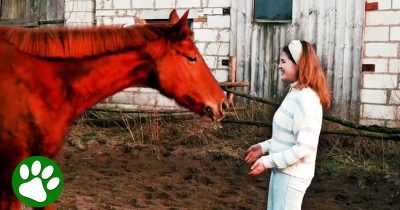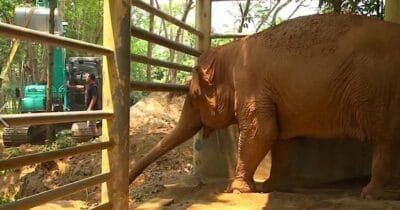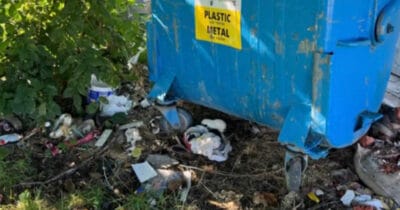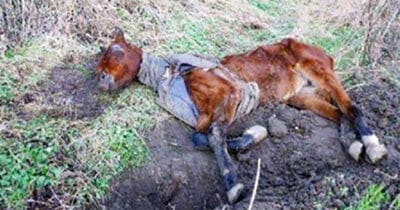
It’s always an exciting day at a zoo when a new baby animal is born, but it’s even more exciting when they are a member of an endangered species. Each new birth is a major step towards repopulation and ensuring the species’ future survival.
Now, one zoo is celebrating the birth of a critically endangered species known as a dancing lemur, which experts are hailing as a “landmark moment” due to its rarity.

The species is the Coquerel’s sifaka lemur, but commonly called the “dancing lemur” due to the way it moves. The Chester Zoo, in England, recently announced the new arrival of a baby Coquerel’s sifaka — the first ever born in Europe.
The baby was born to 10-year-old parents Beatrice and Elliot, who arrived at the zoo 18 months ago after being translocated from the US as part of a conservation breeding program, according to a press release supplied to We Love Animals.
Coquerel’s sifaka is a critically endangered species. According to IUCN primate experts, their population has suffered due to habitat destruction by humans, as well as being hunted for the meat trade. Lemurs, native in the wild only to Madagascar, are now the most endangered group of mammals in the world.

Ninety-four percent of lemur populations are at risk of disappearing, and many species have already become extinct. But the arrival of this newborn is inspiring hope that the “dancing lemur” may survive.
It marks the first-ever successful breeding of a Coquerel’s sifaka lemur in Europe. The Chester Zoo is now the only zoo in the UK, and one of just three in Europe, caring for the species.
“The birth of a Coquerel’s sifaka in Europe is a real landmark moment for conservation and, importantly, has kickstarted the endangered species breeding programme in European zoos for the species – which could be the lifeboat that prevents them from becoming wiped out completely,” said Mike Jordan, Director of Animals and Plants at Chester Zoo.

The Chester Zoo, a not-for-profit conservation and education charity, works with 140 international animal conservation breeding programs, and have been working to protect habitats and unique species in Madagascar for more than a decade.
The baby was born with a thick white coat, weighing just 119 grams and experts say it will continue to cling to its mother for the first few weeks of its life, “riding on her like a backpack” until it is about six months old. The sex is not yet known: zookeepers will determine the sex once the newborn becomes a bit more independent from mom.

In the meantime, both mom and baby are reportedly doing well and bonding.
“While it’s still early days, both mum and baby are doing great. Beatrice is feeding her new arrival regularly and is keeping it nestled in her fur as she leaps from tree to tree,” said Mark Brayshaw, the zoo’s Curator of Mammals.
“In a few weeks’ time, the baby will graduate to riding on her back, before branching out and learning to climb trees independently at around six months old. It won’t be long until this bright-eyed baby will be bouncing 20ft between tree to tree just like its parents.”

The Coquerel’s sifaka gets its nickname from its unusual movement: they stand upright on their back legs and spring side to side. They can also leap more than 20 feet through treetops in a single bound.
It’s truly a unique, beautiful species, and this new birth is reigniting hope for the species’ future.
“While the situation is now quite desperate, it’s the knowledge, skills and expertise gathered by experts at conservation zoos like ours that will play a vital role in preventing the extinction of highly threatened species, just like the Coquerel’s sifaka,” Jordan said.

What an adorable lemur! Congrats to the Chester Zoo on this historic birth, bringing hope to this critically endangered species!
Please share this great news!






